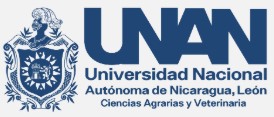Identification of evergreen species in the community of La Cal, municipality of Jinotega
DOI:
https://doi.org/10.5377/ribcc.v5i9.7953Keywords:
Forestal Inventory, Perennial species, Non-evergreen species, Environmental vulnerabilityAbstract
The objective of this study was to classify, characterize and make an inventory of native evergreen species in the community of La Cal-Jinotega between the August-November period of 2017. We start by asking him why it is important to classify the species that exist in that community and then conduct a forest inventory. The methods used were descriptive, cross-sectional, using the forest inventory as a collection instrument. As a result, we found 8 species of evergreen native trees, but the most common was Cacahuillo, which had been coming from this community for many generations.
Downloads
Metrics
References
Mosier, A., & Kroeze, C. (2000). Potential impact on the global atmospheric N2O budget of the increased nitrogen input required to meet future global food demands. Chemosphere-Global Change Science, 2(3-4), 465-473.
Vilar del Hoyo, L., Martín, M. P., & Martínez-Vega, J. (2008). Empleo de técnicas de regresión logística para la obtención de modelos de riesgo humano de incendio forestal a escala regional. Voletín de la A.G.E. 47(5-29)
Anón. 2018. «Quercus pyrenaica, uno de los robles más extendidos en España». Jardines y mucho más en TodoHusqvarna. Recuperado 15 de febrero de 2021 (https://www.todohusqvarna.com/blog/quercus-pyrenaica/).
Downloads
Published
How to Cite
License
Copyright (c) 2019 Revista Iberoamericana de Bioeconomía y Cambio Climático

This work is licensed under a Creative Commons Attribution-NonCommercial-ShareAlike 4.0 International License.
Copyright © 2025 Rev. iberoam. bioecon. climate change. National Autonomous University of Nicaragua León (UNAN-León), Knowledge Area of Agrarian and Veterinary Sciences / Specific Area of Agroecology and Agribusiness / Center for Research in Agrarian Sciencies. Academic Directorate. Research Department. Publication and scientific events Unit.












 EDITORIAL
EDITORIAL e-ISSN
e-ISSN


 COPYRIGHT
COPYRIGHT This work is licensed under a Licencia Internacional
This work is licensed under a Licencia Internacional 












